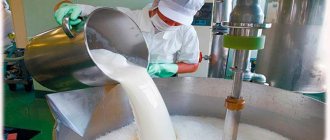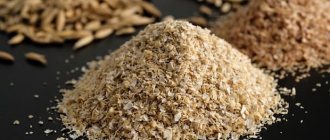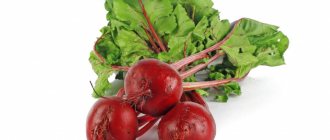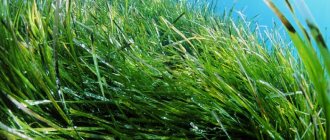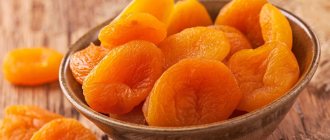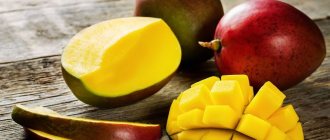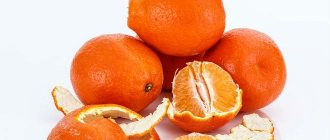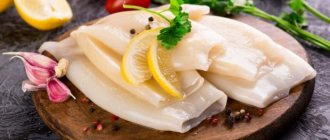The vital primary source of nutrition for a large number of organisms on Earth is milk. Man is no exception.
At the beginning of life, human development and growth occurs due to mother's milk. This is facilitated by the healthy balanced composition of milk. Many people include this valuable drink in their daily diet throughout their lives. Thus, a useful product remains with a person from early childhood to old age.
Now it has become fashionable to discuss the beneficial and harmful properties of milk. Scientists have come to the conclusion that the drink can only be harmful for certain people due to their physiological characteristics. For others, it is a valuable product that gives the body protection from many diseases and saturates the organs with useful substances.
This is milk
Milk is a nutritious fluid that the mammary glands of female mammals are capable of producing during the lactation period. With its help, offspring are fed that are not able to assimilate other foods immediately after birth.
Milk is a multicomponent polydisperse system, which consists of substances that are finely dispersed, which allows the drink to be liquid.
Nowadays, many products that people use contain milk, so it is produced on an industrial scale. All females belonging to the class of mammals have the ability to produce milk. There are almost 6 thousand species of such animals. Humans use milk as food:
- sheep;
- goat;
- mare;
- camel;
- deer;
- donkey
In some regions, female buffalos, yaks, and zebu give a healthy drink to humans. But the most widely consumed is cow's milk.
Calorie content of milk 100 grams
The energy value of milk depends on its fat content, and that, in turn, depends on:
- cow breeds;
- animal nutrition;
- industrial processing of the product.
How many calories are in store-bought cow's milk?
Store-bought cow's milk has different percentages of fat content, which affects its calorie content:
- 0.01% (low fat) - 29-32 calories;
- 0,5% — 34-36%;
- 0,7% — 36-38%;
- 1% - approximately 40-44 calories;
- 1.5% - 43-46 calories;
- 2.5% - 52-56 calories;
- 3.2 - 58-60 calories;
- 3,6% — 61-63%.
Milk from the store, depending on the degree of heat treatment, comes in several types:
- Sterile is considered the safest, but also the most useless. During temperature exposure, all of its beneficial and harmful bacteria are killed.
- Pasteurized is the most popular type. It does not contain harmful bacteria and retains most of the beneficial ones;
- Ultra pasteurized - processed longer than pasteurized, but less than sterile. Therefore, there are no harmful bacteria in it, and half of the beneficial ones are preserved.
- Ghee is exposed to temperature for a long time, so it has practically no benefit, but is also harmless. Has a pleasant caramel flavor.
In cow's milk
Homemade milk is considered to be the most beneficial in composition. At the same time, it may contain microbes dangerous to human health. If an animal is kept in good conditions and its health is carefully monitored, then there is little chance of harmful bacteria being present in it. However, doctors recommend consuming a product that has been pasteurized under gentle temperature conditions.
Homemade natural milk can be:
- Whole - having undergone a process of homogenization - leveling the texture by passing fat globules through special millstones. The calorie content of 100 grams of this product is approximately 65 calories.
- Normalized - having undergone a separation process - separating fats from liquid and further mixing these components to obtain milk 1% - 45 calories, 2.8% - 59 calories and 3.2% - 60 calories.
In goat
Goat's milk has a high calcium content - almost 2 times higher than cow's milk - and better digestibility. It contains literally all the beneficial substances necessary for the human body. It is also more nutritious than cow milk and 100 grams of the product has 69-70 calories.
In dry
Powdered milk can be full-fat or low-fat, which affects the calorie content.
- Low fat - 360 calories per 100 grams.
- Fat - 25% - 480 calories per 100 grams.
In condensed
Condensed milk is a confectionery product that is prepared by boiling milk for a long time with added sugar. It has a thick consistency and rich sweet taste. There are several types of condensed milk:
- Regular condensed with sugar , calorie content per 100 grams of product - 320 calories.
- From coconut milk with Jerusalem artichoke instead of sugar - 185 calories per 100 grams.
- Boiled condensed milk - 320 calories per 100 grams.
Calorie content is average; a more accurate indicator should be looked at on the product packaging.
In baked milk
Baked milk with 4% fat content contains 66-67 calories.
In soybean
Soy milk is extracted from soybeans and is an excellent substitute for cow or goat milk. It is very popular in Asian countries and America, and in recent years it is increasingly being bought by the Russian population. It is slightly sweet and overall very pleasant to the taste. Ideal for vegetarians and people with individual intolerance to animal milk. 100 grams of this product contains 55 calories.
How many calories are in coconut milk?
Coconut milk is extracted from the fruit of the coconut. This is a real find for everyone who, for some reason, does not drink cow or goat, and simply for those who love exotic tastes. Being a nut product in nature, it is very nutritious and fatty. Many people mistake coconut juice for milk, but this is a wrong stereotype. Real coconut milk is extracted by processing the coconut meat and diluting it with water to obtain a smooth consistency.
Calorie content of 100 grams of coconut milk is 155-160 calories.
In the chest
Breast milk is a unique product. Each woman has different properties and composition, depending on the needs of her child. It comes in several types, according to the chronology of lactation:
- Colostrum - the first 3-5 days after the birth of a child - about 100 calories per 100 grams;
- Transitional from colostrum to mature milk - the first couple of weeks, when lactation is established - 66 calories per 100 grams;
- Mature milk - from about the third week of a child's life - 68 calories per 100 grams.
Caloric content is very average. As for mature milk, it is released in two waves - the front one - saturated with carbohydrates, which is conventionally called baby drink, and the back one - fattier, which is considered baby food. To determine the calorie content of mature breast milk, these 2 types were taken into account.
Chemical composition of cow's milk
The rich composition of cow's milk explains its beneficial properties. The natural product contains a lot of valuable components. Milk contains minerals – micro- and macroelements. Macronutrient ratio.
- The product contains a lot of potassium and calcium: per 100 grams - 146 mg and 120 mg, respectively. The calcium in milk is almost completely absorbed by the body - more than 90 percent.
- There is a lot of chlorine in milk - 110 mg per 100 grams, phosphorus - 90 mg per 100 grams.
- Sodium – 50 mg, sulfur – 29 mg, magnesium – 14 mg.
Micronutrient ratio.
- Of the microelements, the drink contains the most zinc – 0.4 mg – and iron – 0.1 mg.
- Manganese - 0.006 mg.
- Other microelements are presented in micrograms. Aluminum – 50 micrograms, fluorine – 20 micrograms, strontium – 17 micrograms, tin – 13 micrograms, copper – 12 micrograms. Slightly less iodine - 9 micrograms, molybdenum - 5 micrograms, selenium and chromium - 2 micrograms each. There is a little cobalt - about 1 microgram.
Milk is rich in important amino acids.
- It contains the non-essential amino acid serine. Serine is an important component, one of those that build brain proteins and myelin sheaths that protect cells of the nervous system from negative influences.
- Milk contains histidine, one of the most important amino acids in maintaining life processes on the planet. Histidine is a proteinogenic substance involved in the formation of protein, affecting the metabolic reactions of the body.
- The drink contains tyrosine, a non-essential amino acid, which is another component of proteins.
- Aminovaleric acid, arginine, which belongs to the essential acids, has a beneficial effect on the functioning of the heart and blood vessels. Arginine is also found in cow's milk.
- The healthy drink is rich in the heterocyclic non-essential amino acid proline, which promotes tissue repair.
- The sulfur-containing amino acid cysteine, which is part of milk and dairy products, has the main positive property of helping the gastrointestinal tract and neutralizing toxic substances that enter the body.
- Milk contains glycine, which belongs to the group of simplest aminoacetic acids. Glycine stimulates mental performance, increases the rate of muscle formation, helps restore muscle mass, and normalizes sleep. DNA synthesis is not possible without glycine. Glycine reduces the toxic effects of alcoholic beverages and medications. Glycine is a probiotic that helps activate a person’s internal defenses.
- The product is also rich in other amino acids: tryptophan, lysine, methionine.
Nutritional value and composition of milk
Milk is a very popular product among people of all genders and ages. It contains about 100 microelements necessary for the body. The chemical composition includes the following names:
- Proteins: casein, globulin, albumin - about 3.5% - they are easily digestible and serve as the building material of muscles and include all the amino acids a person needs.
- Fats - up to 3.5% - are absorbed by the body up to 95%. Fat content depends on the time of year and the conditions in which the animals are kept.
- Lactose - a milk type of sugar - 4.5% - is a carbohydrate whose sweetness is much lower than the sweetness of sugar, but the energy value of lactose is approximately the same as that of sugar. It is necessary for humans because it helps digest B vitamins, ascorbic acid and sugar.
- Mineral salts - up to 1%;
- Water — 85-88%;
- Useful microelements: phosphorus, calcium, potassium, iron, sulfur, iodine, copper, zinc and others.
- Milk contains vitamins A and B, ascorbic and nicotinic acids, riboflavins, and thiamines. Their number is not the same at different times of the year - more in summer due to feeding on fresh plants, less in winter.
- Important enzymes for the digestion process are phosphatase, peroxidase, reductase, amylase, lipase, catalase.
Milk helps strengthen the immune system, serves as a good prevention of cardiovascular and colds, improves the functioning of the digestive and nervous system, and improves sleep.
Properties of milk
The quality of milk is determined by its physical and chemical properties.
- In appearance, color. The liquid should be homogeneous and opaque. Whole milk has a white, pale cream color. The low-fat drink has a blue tint.
- Fresh milk has a sweetish taste. The higher the fat content of the drink, the more tender it is.
- The healthy drink has a specific milky taste.
- The naturalness of the product is determined based on density indicators using a hydrometer. If the density index is less than 1.027, it means the product is diluted with water or obtained from a sick animal.
- The freshness of milk is determined by its acidity. The fresh product has an acidity of 16-18 degrees on the Turner scale. The longer a product is stored, the greater its acidity becomes - this is affected by the action of milk microorganisms.
Is milk healthy? Disputes about the benefits and harms of milk still lean towards the usefulness of the product. The main beneficial properties of milk are due to the content of a large and varied amount of valuable nutritional components that a person needs throughout his life.
How many calories are in different servings:
122
50
0.5
| Qty | A portion | Calories | In the counter |
| 1 glass = 244g | 122 | ||
| 100 g | 50 | ||
| 1 g | 0.5 | ||
| 122 | 1 cup = 244.8g | 122 | |
| 15 | 1 fl oz = 30.57g | 15 | |
| 489 | 1 liter = 978.86g | 489 | |
| 8 | 1 tablespoon = 15g | 8 | |
| 3 | 1 teaspoon = 5g | 3 | |
| 227 | 1 lb = 454g | 227 |
Urea in milk
The optimal urea content in cow's milk is about 25 mg/100 ml. Urea more than 30-35 mg/100 ml indicates excess nitrogen and crude protein in the rumen. At the same time, nitrogen metabolism is overloaded.
The amount of urea in milk reflects the nitrogen balance in the rumen, which is used in formulating the diet. The value of rumen nitrogen balance (RNB, BAR) from 0 to 10 g corresponds to a urea content of 20-25 mg/100 ml.
Relationship between protein content in milk and feeding
| Milk protein | Urea in mg/100 ml | Feeding errors | Opportunities for improvement |
| short | less than 15 | insufficient supply of energy, crude protein and intestinal protein | improve the quality of the main feed; increase feed intake; amount of feed in accordance with productivity; increase the content of crude protein in the diet; do not overfeed cows at the end of lactation |
| short | 15-30 | insufficient supply of energy and protein absorbed in the intestines | improve the quality of the main feed; increase the amount of feed consumption; amount of feed in accordance with productivity; use raw materials with a high proportion of protein that is not broken down in the rumen (soybean cake, pumpkin seed cake, brewer's grain corn, dry pulp) |
| short | more than 30-35 | insufficient supply of energy and digestible protein despite excess crude protein | improve the quality of the main feed; increase feed intake; amount of feed in accordance with productivity; use feed rich in energy with a high proportion of protein that is not broken down in the rumen (corn, dry pulp) |
| average | below 15 | lack of crude protein | increase the content of crude protein in the diet; use protein-rich feeds with a high proportion of protein that is not broken down in the rumen |
| average | 15-30 | balanced feeding | no improvement needed |
| average | more than 30-35 | excess crude protein | reduce crude protein content in the diet |
| high | below 15 | excess energy and lack of crude protein | for cows in the last lactation period, reduce the amount of concentrates; reduce the amount of corn silage; use protein-rich raw materials with a high proportion of protein that is not broken down in the rumen |
| high | 15-30 | excess energy | for cows in the last lactation period, reduce the amount of concentrates; reduce the amount of corn silage; increase the hay content |
| high | more than 30-35 | excess energy and protein | for cows in the last lactation period, reduce the amount of concentrates and crude protein; reduce the amount of corn silage |
How much protein is in milk? We derive patterns
There is a direct relationship between the fat content of milk and the percentage of protein in it. On average it is 2.6-3.8%. It is not recommended to go to extremes, giving preference to milk with a fat content of 6% or higher, as well as striving for complete fat-free milk, 2.5% is enough.
Despite the fact that cow's milk is most common in our country, people all over the world consume this product from other animals. Based on the table below, you will see that the dependence of protein on fat is not unfounded:
| Milk, view | Fat,% per 100 ml | Protein,% per 100ml |
| Cow's milk | 3,9 | 3,6 |
| Goat milk | 4,3 | 3,4 |
| Sheep milk | 6,8 | 5,9 |
| Mare's milk | 1,1 | 2,0 |
| Donkey milk | 1,5 | 2,1 |
| Buffalo milk | 7,6 | 4,6 |
| Camel milk | 4,7 | 3,6 |
| Reindeer milk | 22,4 | 10,4 |
Interesting facts about milk
- Man learned to drink animal milk around 10,000 BC. e. after the domestication of goats.
- In Ancient Egypt, this product was consumed only by pharaohs, priests and very rich people.
- The first pasteurized milk appeared in 1862. It was invented by the French microbiologist Louis Pasteur. Commercial pasteurization began in 1895.
- The first milk bottle was designed and manufactured in 1884 in New York.
- During a thunderstorm, milk sours faster.
- In Rus', to preserve the freshness of this product, a live frog was dipped into it.
- The fattest milk (approximately 50% fat content) is whale and seal. The leanest are mare and donkey.
Milk is the very first food that a baby receives after birth. This is the main product that accompanies us throughout our lives, supplying the necessary calories, vitamins and minerals [14]. Despite all the benefits, milk can be dangerous for some people. However, this is rather an exception to the rule, and not a reason to refuse a white foamy drink without reason.
Sources
- https://BeastFitness.ru/pitanie/moloko-2-5-zhirnosti-kalorijnost.html
- https://licey-istra.ru/produkty-i-napitki/soderzhanie-belka-v-moloke.html
- https://mercabadom.ru/skolko-belka-v-domashnem-moloke/
- https://solerno.ru/dobavki/skolko-v-moloke-belka.html
- https://maria-safina.ru/sostav-moloka-razbiraem-i-delaem-vyvody
- https://soft-agro.com/korovy/o-chem-govoryat-zhirnost-i-belok-moloka.html
- https://ria.ru/20210305/moloko-1600137861.html
- https://eda-land.ru/moloko/belok/
- https://gudi1991.ru/pitanie-i-diety/skolko-belka-v-stakane-moloka.html
- https://FoodandHealth.ru/molochnye-produkty/moloko/

